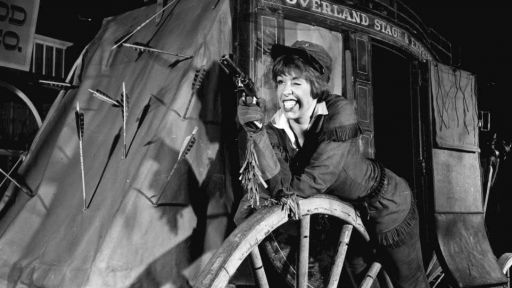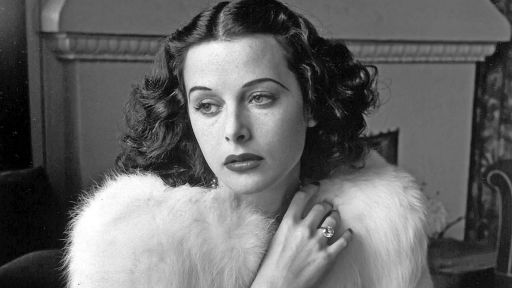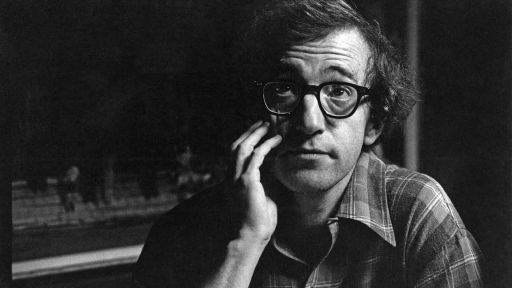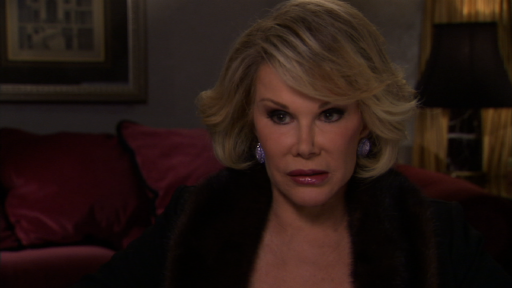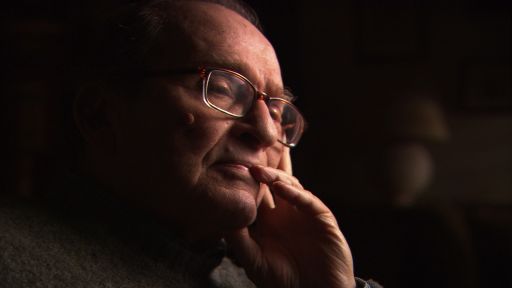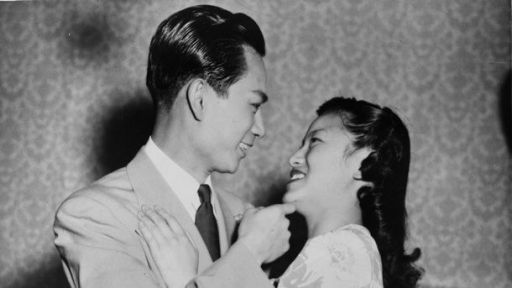Comedian and entertainer Carol Burnett reads an excerpt from the memoir about her daughter, “Carrie and Me,” also included in written form here.
Despite her busy schedule, Carol Burnett always made time for her three young children. But her oldest daughter, Carrie, faltered in adolescence, losing the self-esteem that had fueled her popularity and success in school and hiding her pain in a downward spiral of addiction. As Carrie became lost to drugs, Carol found herself with a daughter in grave danger and a marriage that was bending under the pressure.
Carrie eventually broke free from her addiction. Like her mother, she had a wonderful sense of humor and became a successful actress, singer, and writer, even writing a play about Carol’s childhood. But tragedy struck again when Carrie was diagnosed with cancer. She died at the young age of thirty-eight, leaving a legacy of kindness, creativity, and joy along with a short story that mirrors her own journey, published for the first time in this book.
In Carrie and Me, Carol Burnett shares her personal diary entries and correspondence revealing her anguish as a mother of a troubled teenager, the epiphanies that helped her help her family, and the grief and then the hope she felt after Carrie’s death. Through Burnett’s inimitable voice, we get a portrait of an unforgettable young woman that will bring hope to anyone struggling with raising or losing a child.
What follows is an excerpt from Carrie and Me by Carol Burnett.
Preface
Audio Excerpt: ‘Carrie and Me’ Preface, read by Carol Burnett
In late 2000, my daughter Carrie Hamilton was working on a story, “Sunrise in Memphis,” writing in her small Colorado cabin. The story was about a bohemian girl’s strange road trip to Elvis’s Graceland with a mysterious cowboy. Carrie planned to turn it into a screenplay eventually. Because she felt a kinship with Kate, her main character, Carrie (being a free spirit and somewhat bohemian herself ) decided to hit the road and take the same trip for research purposes.
So she got out her maps, filled the gas tank in her Jeep, and headed south toward Memphis. She e‑mailed me fresh pages of the story almost daily, along with tales of her own adventures on her journey to Graceland. As a side trip, Carrie visited our family’s old stomping grounds in San Antonio, Texas, and Belleville, Arkansas, since the two of us were writing a play together based on my family, who came from those parts of the country.
Carrie didn’t live to finish either project. She died of cancer a little over a year later at the age of thirty-eight.
This book has taken me on a bittersweet journey. When she was in the hospital for the last time, Carrie asked me to finish “Sunrise in Memphis” for her, which I haven’t been able to do. Try as I might, the characters in the story were hers to write, not mine. Carrie’s request had been living with me for over ten years when I finally figured out what I could do.
Fortunately, I had saved all of the letters and e‑mails we wrote to each other during her road trip to Memphis. In Part One of this book I’ve combined that correspondence with my own memories. These include a few episodes I’ve written about before, but I feel they bear repeating to round out the order of events. I’ve also written here about Carrie’s brave fight against her illness. Part Two is Carrie’s story “Sunrise in Memphis,” which is fun to read in its own right, but also eerily echoes Carrie’s journey.
This book is my way of honoring her last request, bringing to the page many of Carrie’s thoughts and feelings and also my own journey with her, including all the ups and downs in the early years (which got pretty bumpy when Carrie became a teenager).
Carrie was widely known as a magnetic young woman with a stunning smile, an infectious laugh, a throaty voice, and the soul of a poet. She was someone who cared deeply for others, particularly for those less fortunate. Whenever a homeless person approached her, she would offer them a deal: five dollars if they told her their story. As you’ll see, Carrie used those stories, and the personal narratives shared with her by everyone she met, as inspiration for her prose, her poetry, her music, her lyrics, and her acting. Carrie piled so much into her young life that one can only imagine what she would have tackled and accomplished in the second half.
For myself, I hope you will get to know the daughter I loved and cherished. I can honestly say that just about everyone who knew Carrie loved her. Maybe that’s because she loved them right back.
I also hope I’ve succeeded in bringing Carrie’s essence to these pages. I treasure her words, and even after reading them again and again, each time I am grateful for the reminder that she has never left me.
Some Very Early Memories
December 1963
New York City
In spite of the cold, snowy weather, I was very hot all the time because I was very pregnant. One night I was burning up, but didn’t dare open the window in our apartment bedroom for fear that my husband, Joe Hamilton, sleeping next to me, might wind up freezing to death. So I went into the second bedroom, opened the window to let the cold night air blow in, and plopped myself down on top of the covers. At last I was finally comfortable. The next morning I woke up refreshed after a good night’s sleep and found myself covered in a lovely white blanket of snow, which had blown in sideways through the open window during the night! Heaven.
I went into labor the evening of December 4. Small pains at first, but we knew this was it. Joe and I checked into the hospital around eight o’clock, and I was assigned to a labor room. The night nurse, Louise (I remember her name because it was my mother’s name), helped me get undressed and issued me the regular hospital uniform—a singularly unattractive, knee-length gown, opening in the back. She hung up my dress and coat in the closet, put my boots on the shelf, and led me to a rather lumpy bed. I obediently got in and she hoisted up some metal bars on both sides. I figured she must be worried that I might roll off onto the floor and bounce down the hall.
A doctor on duty came in to examine me, and my water broke immediately.
A short while later, Joe was ushered in and was advised by Louise that he might as well go home because it looked like it would be a long night. I secretly wished he would stay with me, but in those days the father wasn’t necessarily a welcome figure in the labor room. Louise promised Joe she’d call him when the time drew near. They left, and I was alone in the dark. The nurse had given me a shot and I dozed off, thinking this labor thing wasn’t nearly as difficult as they say. . . .
The next thing I remember is waking to the sound of some woman from the cell next to mine screaming, “Omigod! Omigod! Get this out of me NOW!!!” I dozed off again, still confident that my labor was going to be a snap.
Wrong. I was awakened by pains coming fast and hard. I called out for Louise. She came in, gave me a few ice chips to chew on, assured me that all was well, and left me once again. All was well, my foot! I thought the shot they had given me earlier was going to make this whole business easier. It only made me drunk. So drunk that I sat up, pushed the bed bars down, got up, waddled over to the closet, and proceeded to get dressed. I had put on my dress and coat, and was trying to squeeze into my boots when Louise came back in.
“Mrs. Hamilton! What are you doing?”
“Leaving.”
“But you can’t!”
“Look,” I reasoned, “I didn’t feel like this when I came in, so I won’t feel like this when I get out of here!”
She got me back into that god-awful gown and into that godawful bed, and the whole thing started back up with a vengeance. Before long I found myself sounding just like my next-door neighbor. Carrie Louise Hamilton, my firstborn child, arrived the morning of December 5 at 11:20 a.m. They placed her in my arms and when I looked at my little miracle, all that pain quickly became a dim memory.
* * *
I remember wanting Carrie to walk by her first birthday. She had already taken the first few baby steps by the time she was eleven months old, but only when we walked together, so she could hold on to my little finger. I came up with a brilliant idea. I would hold on to one end of a large handkerchief and give Carrie the other end (which substituted for my little finger). It worked. Together we walked up and down the hall of our apartment several times a day for about a week, and she never fell down. Then came the day when I quietly dropped my end of the handkerchief, but continued to walk beside her. Not noticing, she walked without my help to the end of the hall. I was so excited I exclaimed, “Good girl!!! See? You did it all by yourself!” She looked at the handkerchief, and seeing that I wasn’t holding the other end, immediately plopped down on the floor and started to cry. After that I let her learn to walk at her own pace, having come to the realization that there are some things a parent shouldn’t try to force.
In 1966, Joe and I relocated to Los Angeles, where we eventually welcomed two more little girls into our family, Jody and Erin. Our variety show premiered in the fall of 1967 when Jody was eight months old, and Erin was born in August of 1968 during our summer hiatus. So now we had three beautiful little girls.
We bought Betty Grable’s old house. She had been one of my favorite movie stars when I was growing up, so it was a particular thrill to know that she had walked (or tap-danced!) in those very halls. It was a sheer delight for me when, in the very first season of The Carol Burnett Show, Betty Grable was a guest!
As our family settled into life in California, Joe and I made sure our work schedules gave us plenty of time to be with the girls. Usually I went to work after the girls had gone off to school and I would often be out in time to pick them up. Dinner was at six o’clock every night. The only time we worked all day was during our Friday tapings. When the girls were old enough, they would attend our early dress rehearsal and wind up having their pictures taken with our guests each week. Our show would take two weeks off at Christmas, one week off for Easter vacation, and the entire summer off! It was a perfect schedule for parents of three small children.
* * *
When Carrie was about five I thought it would be a swell idea to send her to ballet school. Outfitted in her tights and a leotard, she happily leaped around with the other little girls. One afternoon I was driving her home from a class, and she started to cry. “What’s the matter, sweetie?”
“I have to pee-pee!!!!”
I drove as fast as I could and pulled into our driveway several minutes later. We jumped out of the car and sprinted into the house. Too late. She had let loose with the waterworks and her leotard and tights were completely soaked. She was bawling her eyes out over the humiliation of it all, and declared in no uncertain terms that she didn’t want to continue with the lessons anymore because “IT’S NOT EASY BEING A BALLERINA!”
Needless to say, this time (having learned my lesson from the handkerchief-walking episode) I didn’t try to force her to continue. . . .
Not too long afterward, it was time for Carrie to enter kindergarten. We had enrolled her in a small school not far from where we lived and when the big day came Carrie was excited as all getout. “I’m a big girl now!!!”
The principal, Mrs. Vickers, had told me to pull my car up to the curb in front of the school, where she would meet us at nine a.m. I figured I would go with Carrie into her classroom, get her settled in, and then leave after a few minutes.
When we pulled up to the curb, Mrs. Vickers was there, waiting for us. All of a sudden I noticed several cars waiting in line behind me: other mothers were dropping off their kids, too. I stopped, and Mrs. Vickers opened Carrie’s door and proceeded to take Carrie by the hand and slam the door, yelling to me: “PULL AWAY! PULL AWAY!” At that moment, it dawned on me that I would not be walking my daughter into her classroom on her first day of school.
Startled, Carrie began to cry and Mrs. Vickers picked her up in her arms, telling me once again to “PULL AWAY!” As I peeled out, I saw the other cars dropping off their little passengers, and also “pulling away.” Looking in the rearview mirror, I saw my baby crying for me as I rounded the corner. I was as miserable as she was.
I drove home and sat staring at the clock ticking away the l‑o-n-g minutes until I could pick Carrie up at noon. “Surely, she must’ve been okay once she got into class and met all the other kids,” I prayed. After three hours, which seemed like three years, noon finally arrived and I tore out of the house. This time I parked down the block and walked up to the school, so I could speak with Mrs. Vickers (without having to “pull away”) and ask her how Carrie had done.
“She sat alone on the play yard bench the whole three hours, but I’m sure she’ll warm up in time.” (Oh great!) I found Carrie still sitting on the bench in the play yard. She rushed up to me and threw her arms around my legs. Both of us were crying.
Back in the car on the way home, she looked up at me and smiled, “Boy, Mommy, am I glad THAT’S over with!”
At that moment, I didn’t have the heart to tell her that school lasts more than just one day. We stopped for an ice cream cone before I broke the news to her.
One day we caught Carrie in a fib. I don’t even remember what it was exactly, but Joe and I felt it was important to send her upstairs to her room and to bed right after dinner. It couldn’t have been much of a lie. She was only six, but we wanted to make sure it registered with her that fibbing was not a good thing.
After a few minutes I knocked on the door and entered the bedroom she shared with her sister Jody. We were alone. Carrie was in her PJs and under the covers. She had been crying. I sat on the edge of the bed and kissed her, wiping the tears away.
“Sweetheart. Your daddy and I love you very much. You know that, don’t you?”
“Uh-huh . . .”
“We love you, but we don’t like what you did. Do you understand the difference?”
She nodded. I moved closer. “Honey, you can always tell us the truth, no matter what, and we’ll still love you. That will never change.”
She was staring at me. Hard. I moved even closer. Face-to-face.
“It’s just that telling fibs or lies can only lead to bigger fibs and bigger lies and then things get worse and worse. And we don’t want that, now, do we?”
Carrie hadn’t blinked or taken her eyes off me. I was really getting through to her. By this time, we were just about nose to nose. I seized the opportunity to expand on the importance of honest communication, moving on to talk about how love could overcome any differences we might ever have, etc., etc. “Never be afraid to come and talk to us about anything. I promise Daddy and I will listen, and we will work it out, no matter what it is.”
She was looking at me, mesmerized. This had been going on for several minutes and she was still drinking in what I was saying with all her heart! I was so proud of myself, and of how I was handling the situation that, I swear, in the back of my mind, I heard violins. Somebody, somewhere, was about to present me with a medal for “Mother of the Year.”
I finally finished, and asked Carrie if she had anything to ask me.
“Uh-huh.”
“What, darling? Anything. Just ask.”
“How many teeth do you have?”
Taking three little girls, ages three to seven, out to dinner proved to be a challenge, to say the least. We’d dress them in their jeans and sweatshirts, pile them into the car, and head for Carmine’s, the local Italian restaurant. Joe and I barely made it through some meals with our sanity intact, and several times it just plain didn’t work. The difficulty was that on any given evening, one, two, or all three of the girls would turn out to be a handful. They would argue with one another, or not want to eat what they had ordered, or (on occasion) open their mouths flashing unswallowed food to crack one another up, or fall asleep at the table in spite of the early hour. So Joe and I gave up trying for several weeks.
Then one day I got an idea. I put on a makeup smock that I had in my closet, and taped a sign on my bedroom door: beauty salon. please knock for an appointment. the cost of a brand-new hairdo is one penny.
In a few short minutes, I heard a knock and when I opened the door, there stood Carrie (who could read the sign) with Jody and Erin in line behind her. Each one had a penny in her hand. Carrie, being the oldest, opted to go first.
I said, “Yes, madam? May I be of service?”
Catching on, Carrie replied, “I would like to get a new hairdo.”
“Right this way, madam.” I led her into my bathroom and sat her down in front of the mirror at my dressing table. “Would madam like a pageboy or a flip?”
Unsure, she simply stared into the mirror. I ran my fingers through her hair and looking at her through the mirror, I said, “Madam, with your lovely features, may I suggest a pageboy?”
She nodded, and I proceeded to wash and towel-dry her hair. I might add that this was the easiest time I ever had washing her hair. No complaints about soap in her eyes, etc., etc. She became the ideal client.
We returned to the mirror, and I began to blow-dry her hair with a brush, and then applied a curling iron to turn her hair under. When I was finished, she was sporting a perfect pageboy.
“Now, madam, why don’t you pick out a nice dress to wear out to dinner tonight?” I held out my hand for the penny, which she happily shelled out before she ran to her room to pick out a DRESS!
Jody was next, and the whole scenario played out again, with Jody opting for a flip. Then she, too, headed for her closet and chose a nice blue dress.
Erin was next, wanting a pageboy like Carrie’s. I helped her pick out a pink dress.
Joe and I waited for them to come downstairs, dressed and ready to go. They waltzed into the living room, all three pleased as punch with their new “looks.”
All through dinner they acted like perfect little ladies.
Joe asked me later, “How did you know this would work?”
“Simple. We all act differently depending on what we’re wearing and how we look. The girls felt grown-up, so they acted like it.”
I’ve always believed that kids are great actors. They “become” what they look like. Halloween is a good example. As pirates, they “swashbuckle” with the best of them. As cowboys, they swagger, bowlegged, with their hands on their holsters, and tip their hats just so. As witches, they can cackle like Margaret Hamilton in The Wizard of Oz. As princesses, they can dance and twirl like Cinderella, and as fairies they seem to glide . . .
I remember a time when I was in the company of the brilliant English actor Laurence Olivier, and he was talking about how he gets into character. “I’m never quite sure how I’m going to act a role until I figure out what ‘HE’S’ going to look like. I’m particularly fond of ‘remodeling’ my nose! Sometimes it can sport a bump, or sometimes I’ll make the nostrils wider . . . it’s lots of fun to hide yourself behind makeup or a certain costume.”
I couldn’t agree more. During my variety show, I often didn’t know how I was going to perform a sketch until I had a powwow with our multitalented costume designer, Bob Mackie. For instance, when Tim Conway created the characters of Mr. Tudball and Mrs. Wiggins, my character of the ditzy secretary (“whom the IQ Fairy never visited”) was originally written to be a dotty senior citizen. When I went to the costume fitting that week, Bob showed me a sketch he had drawn of an altogether different Mrs. Wiggins. She was a blond bimbo wearing a flowery blouse with a push-up bra, and a tight black skirt, plus stilettos. When I tried on the skirt, we found it sagged in the rear end. I said to Bob, “I think we’ll have to take it in, because I’m pretty flat in the behind.”
“No we won’t. Just stick your butt out where it’s sagging.”
That’s exactly what I did, and, as a result, I wound up with a most peculiar shape, because of my posture, plus an odd “waddle walk” because of the tight skirt and the stilettos, which eventually became the character’s trademark. All these crazy choices opened up the character of Mrs. Wiggins for me. In other words, now I knew who she was, and how to portray her—simply because of how she looked and how she walked!
So that’s how I came up with the “game” for the girls and their hairdos.
I was pretty pleased with myself. Not only did the game work, but I was three pennies richer! (And I still have them to this day.)
* * *
All through grammar school, Carrie excelled in her classes, never bringing home any grades lower than a B‑plus, but more often As. She won the school’s coveted Silver Bowl when she was graduating from the sixth grade for not only having the best grades, but also for being the most popular student. I almost exploded with pride when her name was announced.
By the time Carrie entered the seventh grade in junior high, she had sprouted up and become noticeably taller than her classmates. She was reed thin (best described as gangly), and I knew she worried about her big feet, the railroad-track braces on her teeth, and her stringy ash-blond hair. Still the question caught me by surprise.
“Mama, am I ugly?”
“Why would you think that, sweetheart?”
“Because I am. I’m ugly.”
“Well, you’re not. You’re just going through that awkward age, that’s all. Before you know it, you’ll turn into a butterfly!”
“I’ll never be a butterfly.”
“Of course you will.”
“No I won’t!”
That should have been a red flag for me, but I truly believed what I said to myself: “It’s simply a stage she’s going through, that’s all.”
In 1978, I had decided that we should end our eleven-year run of The Carol Burnett Show. Even though CBS wanted us back for a twelfth season, I felt it was time to move on. I wanted to be able to pick and choose projects that would give me even more time to spend at home. Also, I believed it was better to leave before someone from the network would eventually knock on our door and say, “Stop doing this!” Our final taping was in March of that year. It was a bittersweet ending, but I felt it was the right thing to do.
Even though I was home much more, Carrie was becoming more and more agitated. As much as I tried to get her off her pity-pot, she kept digging in her heels, and over the next year, in spite of the fact that her braces had come off and many of her friends were now as tall as she was, Carrie seemed to be losing all the self-esteem she had enjoyed in grammar school.
From Carrie and Me by Carol Burnett. Excerpted by permission of Simon & Schuster.



